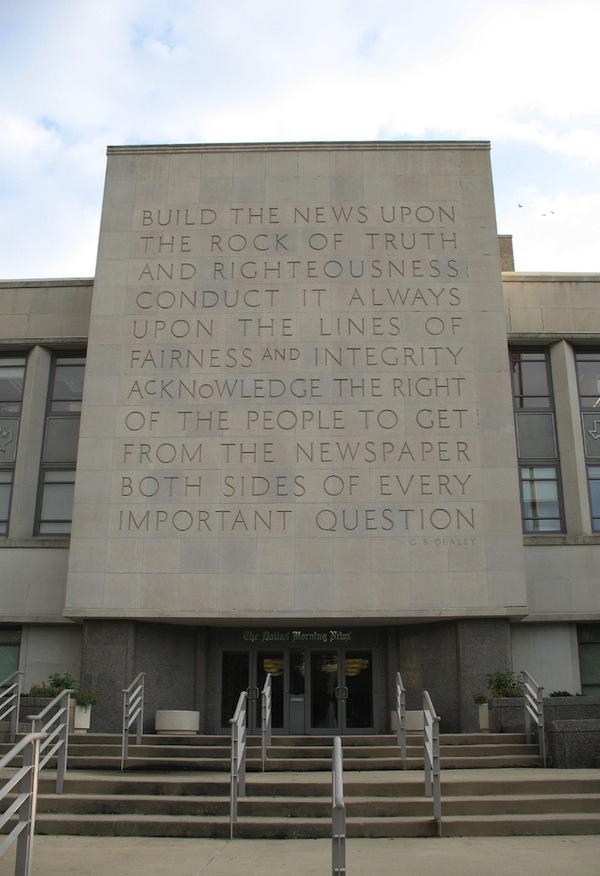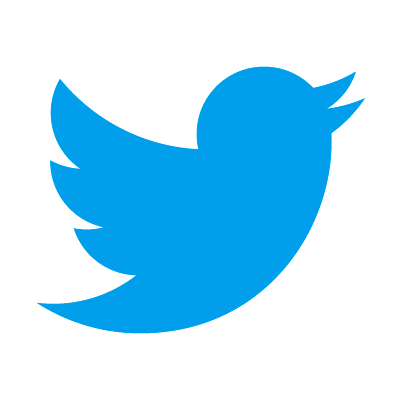
False equivalence and the shutdown: The U.S. federal government’s shutdown has dominated the news this week, and it’s had tangential impacts on some areas of the media as well. Several government websites crucial to data journalists, particularly the U.S. Census site, have been shuttered, as Poynter reported. On the other hand, the government’s news programs broadcasted to foreign countries, such as Voice of America, are remaining open.
News coverage of the shutdown followed some familiar tropes, none more vexing to observers than the devotion to “both sides are responsible” equivalence. Dan Froomkin at Al Jazeera America called out false symmetry most forcefully: “the political media’s aversion to doing anything that might be seen as taking sides — combined with its obsession with process — led them to actively obscure the truth in their coverage of the votes.”
NYU’s Jay Rosen identified the same problem, but said this type of reporting’s prominence is slowly fading, writing that “with the critique of ‘false equivalence’ now a part of the journalist’s daily life and the rise of point-of-view reporting to normal status online, the artifice is shakier than ever.”
NPR’s David Folkenflik talked to journalists about how they’re dealing with the false-equivalence problem. Poynter’s Kelly McBride approached the issue from an ethical perspective, asserting that journalists have an obligation to use the clearest language possible to describe political action and reiterating PolitiFact founder Bill Adair’s recommendation to use specificity to counter false equivalence.
In pair of posts (one from last week), the Columbia Journalism Review called for journalists to go past the bipartisan rhetoric by covering the shutdown at a local level. On a different front, the Lab’s Caroline O’Donovan looked at Quartz’s use of a single-serving site to monitor the government shutdown in a tongue-in-cheek way.

One newspaper tears down its paywall: The overall trend in newspapers has been to embrace paid-content plans online, but The Dallas Morning News became the second major American newspaper to drop its paywall in recent months with its announcement this week that it will make all of its content available for free. It will continue to charge, though, for a “more visual experience” — a different design for the same content. The premium version will be $11.96 a month and free to subscribers.
The Lab’s Justin Ellis wrote a thorough analysis of the site, noting that unlike the two-site free/paid strategies at papers like The Boston Globe and San Francisco Chronicle, the Morning News’ sites differ only in presentation, not content. He also talked to publisher Jim Moroney about the paper’s plans to shift away from getting digital-only subscriptions (which weren’t growing as they’d hoped) and toward using the premium site as a supplement to the print product, with events and other perks as part of subscribership.
At Poynter, Andrew Beaujon came away with a similar impression from Morning News executives. He focused on the paper’s use of its digital product as a throw-in with print rather than a standalone product that people would be expected to pay for by itself. Ad Age, meanwhile, looked at the Morning News’ plans to center advertising on the free site, with less on the premium one.
Ryan Chittum of the Columbia Journalism Review said the Morning News’ dismantling its paywall isn’t an indictment of paywalls in general, but simply the product of faulty paywall design. When the paper set its paywall up in early 2011, Chittum said, it should have used the more porous metered model pioneered by The New York Times, rather than a hard paywall that limits traffic and advertising revenue. “Only the most essential news providers can pull that off, and the News is not the powerhouse paper it was 10 years ago,” Chittum said of the hard-paywall model.
 Facebook, Twitter, and TV talk: Facebook made the latest move this week in its ongoing battle with Twitter over grabbing the ad dollars around TV-related online conversation by sending weekly reports to the big four American networks on the social-media chatter about each of their shows, The Wall Street Journal reported.
Facebook, Twitter, and TV talk: Facebook made the latest move this week in its ongoing battle with Twitter over grabbing the ad dollars around TV-related online conversation by sending weekly reports to the big four American networks on the social-media chatter about each of their shows, The Wall Street Journal reported.
Twitter is also providing that kind of data to TV executives and advertisers, but Facebook is pitching its data as deeper and more representative than Twitter’s. TechCrunch’s Sarah Perez wasn’t buying it, though, as she argued that the likes included in Facebook’s data aren’t as meaningful as the tweets that Twitter measures. The Next Web’s Jon Russell also concluded that Twitter is the superior venue for real-time TV discussion because of its simplicity and the accessibility of its information.
The New York Times’ Vindu Goel and Brian Stelter laid out the stakes and strategies in this struggle over the online conversation (and ad dollars) surrounding TV, noting each side’s strengths: Twitter has the upper hand in instant discussion about live TV, but Facebook has more information about its users that advertisers can use to make more finely honed and individually targeted appeals. Forbes’ Tim Worstall said this conversational arms race should work out great for Facebook, Twitter, and advertisers, but the networks look like the losers, as they fall behind in the competition for advertisers.
Facebook also expanded its Graph Search to include posts and status updates, rather than just people, interests, and photos. As TechCrunch’s Josh Constine pointed out, this should help push Facebook toward that real-time water-cooler status around big events that Twitter currently enjoys, but it also ends the “privacy by obscurity” of many users’ old posts. Forbes’ Robert Hof contended that while the new Graph Search has troubling implications for privacy, it’s unlikely to spark the protests that past Facebook changes have. And Alastair Reid of Journalism.co.uk explained how Graph Search might be useful for journalists.
Twitter opens its books: Twitter also filed its long-awaited S-1, the public document registering for an initial public offering, on Thursday. The New York Times has a good overview of the filing, and Quartz has a quick rundown of the notable details and figures: Twitter lost $79.4 million on $317 million revenue (that’s $0.55 per user this quarter, compared with Facebook’s $1.41 over the same period), it gets 85% percent of its revenue from ads and the other 15% from data, and it has 218 million active monthly users, of which 49 million are in the U.S.
A few other details from the filing: Twitter is issuing only one class of shares (unlike Facebook), it revealed some new information about its major shareholders, and it focused on the need for international growth, as its revenue per user is much higher there.
As PandoDaily’s Erin Griffith noted, Twitter’s S-1 was clearly meant to position the company as the anti-Facebook, emphasizing its openness and its orientation to news and real-time events. BuzzFeed’s Matthew Zeitlin also broke down Twitter’s pitch to advertisers compared with Facebook. But as Tom Simonite of MIT Technology Review and Ryan Tate of Wired argued, Twitter isn’t in nearly as good of shape as Facebook was at its IPO: It’s growth is slowing, it’s getting less revenue per user, and it’s losing money. Tate put the difference most starkly: “One is a reliable profit gusher while the other is an anemic mess.”
Reading roundup: A few updates on ongoing stories this week, as well as thoughtful pieces to give a read:
— The U.S. National Security Agency revelations keep coming: It’s gathering detailed information mapping Americans’ social networks, and it’s storing web browsing metadata for a broad range of people whom it doesn’t consider people of interest. The New Yorker’s Ken Auletta profiled the paper that’s been at the center of these revelations, The Guardian, and its indefatigable editor, Alan Rusbridger. The story included and prompted some sniping back and forth between The Guardian’s Glenn Greenwald and The New York Times’ Bill Keller, and Greenwald and Guardian editor Janine Gibson talked to Redditors about their NSA reporting. Meanwhile, recently unsealed documents told the story of how the email encryption service Lavabit resisted government efforts to track NSA leaker Edward Snowden, as Wired and The New York Times reported.
— Amazon CEO Jeff Bezos officially closed his $250 million purchase of The Washington Post this week. The Post published an in-depth examination of the forces that led up to the Graham family’s sale of the paper, which Ryan Chittum aptly analyzed at the Columbia Journalism Review. The Post also looked at the future of The Washington Post Co. without the paper.
— A few leftover pieces from last week’s debate over comments: The New York Times looked at how comments are being handled on science sites, and science educator Marie-Claire Shanahan took issue with Popular Science’s rationale for its decision to do away with comments, as the Columbia Journalism Review’s Alexis Sobel Fitts. Longtime editor Howard Weaver proposed allowing users to rank and filter comments themselves.
— A couple of useful pieces for those in journalism: Paul Bradshaw defined journalistic curation and provided a guide to numerous curational tools, and the Knight Digital Media Center’s Michele McLellan published a pair of posts highlighting results of a survey of local online news startups, illustrating their strategies and challenges.
— Finally, a couple of thoughtful pieces to reflect on: Reporter (and former Lab staffer) Adrienne LaFrance wrote a candid reflection on the gender inequity in her own reporting and the reasons for it, and The New York Times’ Derek Willis urged young journalists and students who consider themselves digitally savvy to push themselves to learn about how to make things on the web, not just use them.
Image of The Dallas Morning News building by Al Bakker used under a Creative Commons license. Photo of protestor at Sen. Ted Cruz’ San Antonio office by AP/Eric Gay.